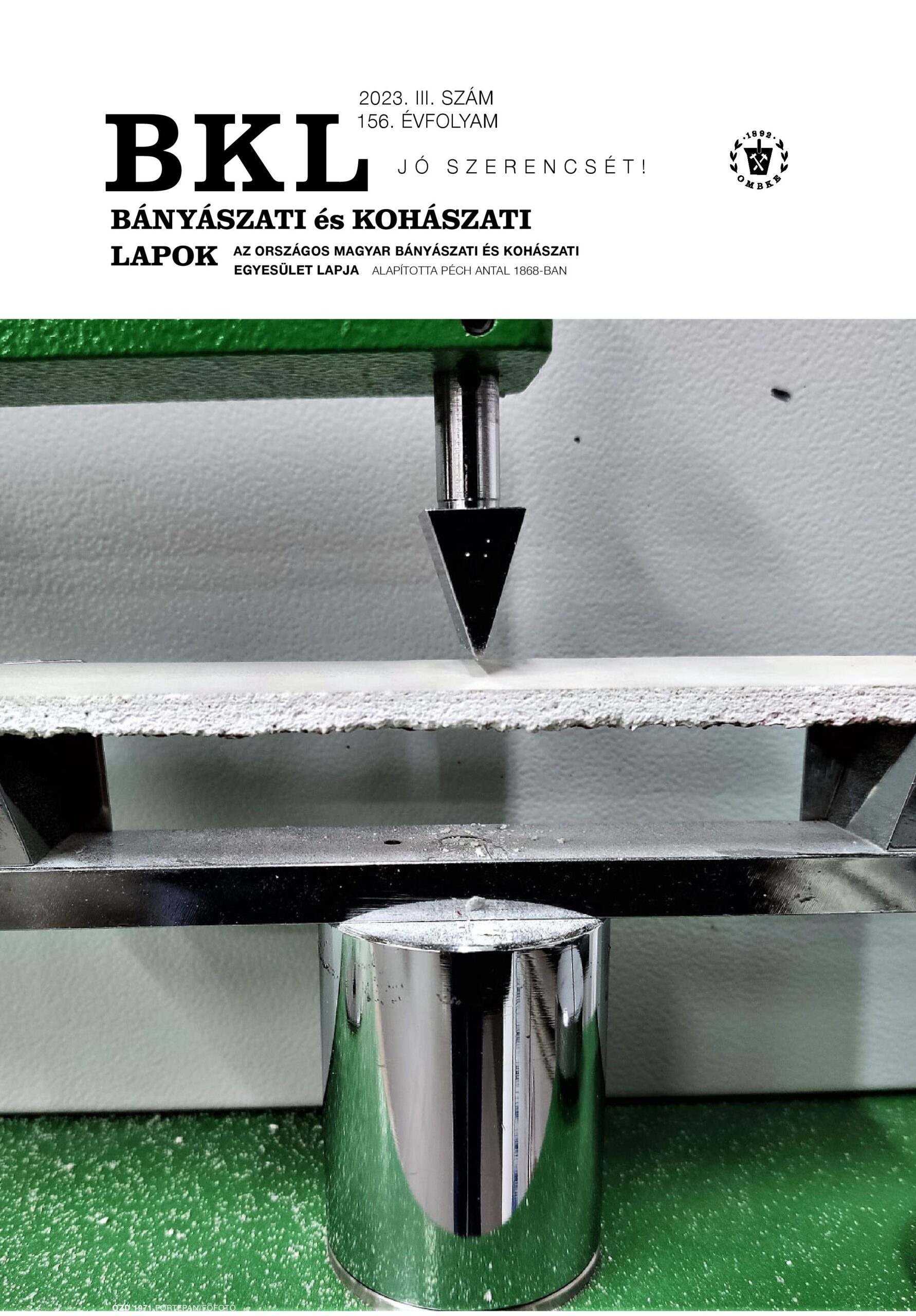Mining test measurements with an imaging GNSS geodetic surveying instrument
Abstract
In our study, first we briefly deal with the antecedents of the research work related to coal mining in Borsod region. Then we will describe several modern surveying techniques already used in mine measurement practice or in the introduction phase, together with the advantages and disadvantages of their application. The kinds of terrestrial laser scanning are as follows: UAV (drone) based aerial photogrammetry and aerial laser scanning as well as ultrasonic (sonar) geodetic data acquisition procedures.
In the following, the characteristics of the LEICA GS18 I imaging GNSS measuring device, the advantages and disadvantages associated with its use, as well as its technical parameters are discussed. We will also examine the process of carrying out the survey and give a brief overview of the difficulties associated with geodetic data capture when we exceed the survey distance zone recommended by the device manufacturer.
Afterwards, we will turn to the most important part of our study, the mining test measurements executed with the imaging GNSS surveying instrument on January the 27th, 2023 in the Miskolc-Mexikóvölgy limestone mine, and their results. We will also present other test measurements carried out in a home mine and at another location. Finally, we evaluate the experience obtained from the research task.
On the basis of what mentioned above, we can state that this geodetic measuring device – considering its uniqueness due to its complexity – is nothing short of remarkable. We have pointed out all the advantages which can put its application in foreground in mine surveying in the future.
The initial results of our research work also highlighted that for the regular use of the Leica GS18 I imaging GNSS RTK rover in mines, further test measurements will be necessary, if we have the opportunity to buy it, considering the deeper understanding of the individual possibilities inherent in the surveying, and the accuracy questions. Among the additional advantages that can be associated with the use of the measuring device, we must emphasize that compared to other measuring methods (e.g. the discussed drone procedures), it does not require any special training or official authorization (e.g. the existence of a flight license, a UAV device and its operator registration, requesting a flight permit, remote sensing notification obligation, securing an aircraft, environmental protection permit, etc.). We must note as well that the price of this special imaging RTK measuring device is also quite high, but it is still more favorable than that of laser scanners.
References
Havasi I. (2019): Korszerű bányamérési eljárások meddőhányók mozgásvizsgálatára. In: "Műszaki Tudomány az Észak-kelet Magyarországi Régióban" c. konferencia. Konferenciakötet, pp. 129-132., (Szerk: dr. Bodzás Sándor, dr. habil. Antal Tamás), Debreceni Akadémiai Bizottság, Debrecen, 2019. 05. 29. ISBN: 978-963-7064-38-8
Marcis L. (2022): Bányamérés drónnal a gyakorlati tapasztalatok tükrében. In: "Múltunk és a modern jövő, LX. Bányamérő Továbbképző és Tapasztalatcsere". Konferenciakiadvány, pp. 32-41, (Szerk.: Wéber 2000 Kft.), Balatongyörök, 2022. 05. 25-27.
Eke Z., Havasi I. (2021): Multisugaras szonár alkalmazása a bányamérésben. Bányászati és Kohászati Lapok, Bányászat, Kőolaj és Földgáz, 154(III), 2530. ISSN: 2498-8332



